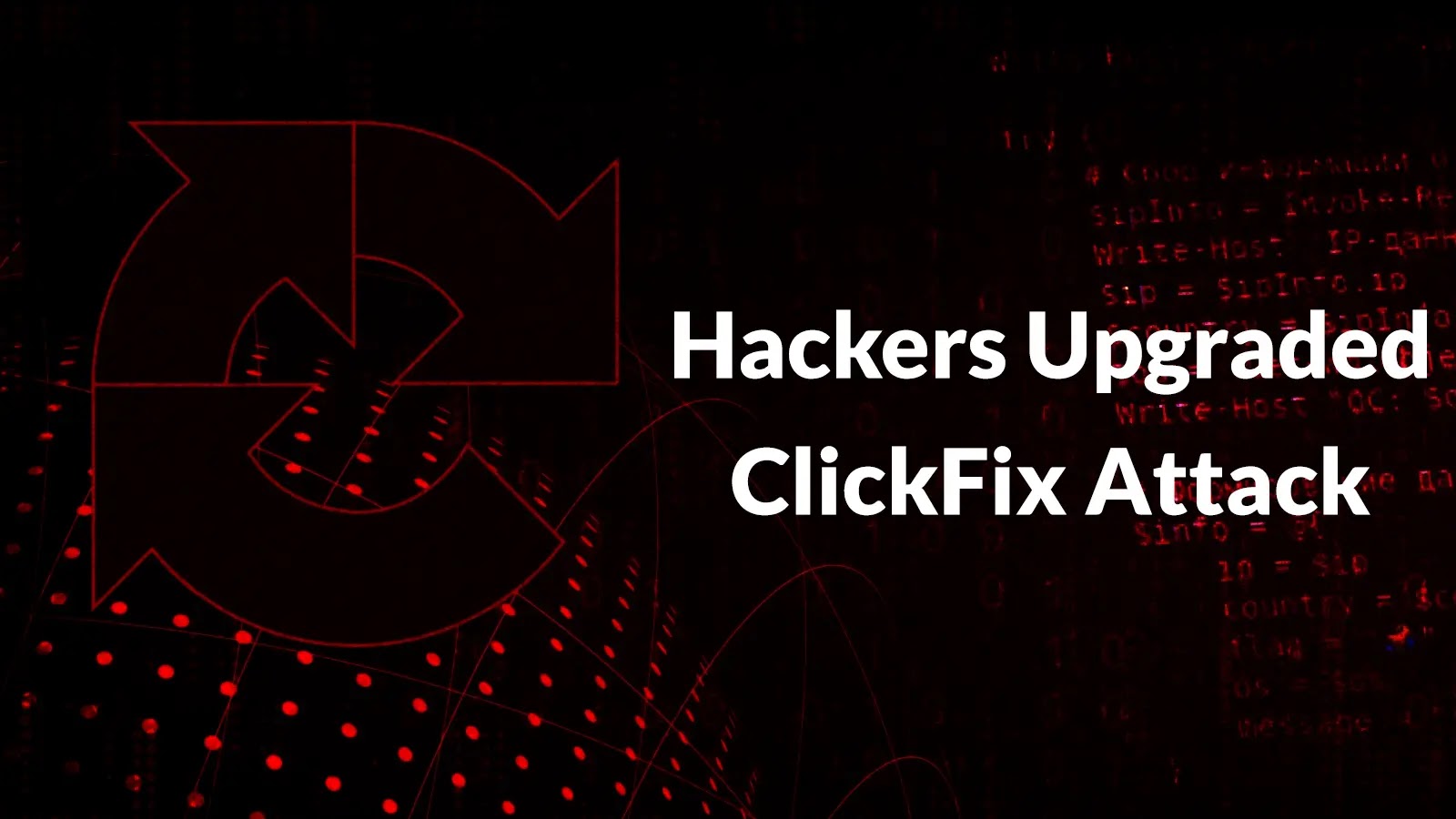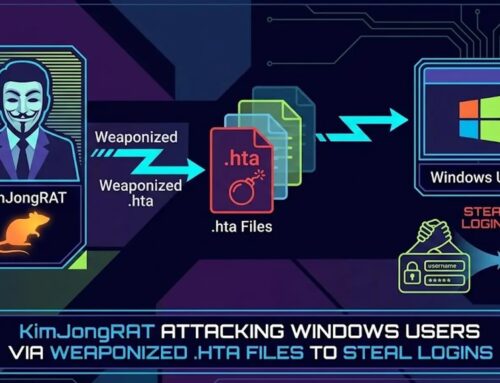
Hackers Upgraded ClickFix Attack With Cache Smuggling to Secretly Download Malicious Files
Enterprise networks are under constant siege, and threat actors continually refine their tactics to bypass defenses. A recent and concerning development in this arms race is the upgrade to the ClickFix attack methodology, now incorporating sophisticated cache smuggling techniques. This evolution allows malicious files to be downloaded stealthily, evading traditional detection mechanisms and posing a significant threat to organizational security, particularly those relying on remote access infrastructure like Fortinet VPNs.
Understanding the Evolved ClickFix Attack
The ClickFix attack has been enhanced to exploit a clever technical loophole: cache smuggling. Unlike direct download attempts that security solutions might easily flag, cache smuggling leverages legitimate web caching infrastructure to deliver malicious payloads. In this upgraded scenario, threat actors are masquerading their operations as a Fortinet VPN compliance checking tool. This tactic is particularly effective because it capitalizes on the inherent trust organizations place in tools designed to ensure the security and compliance of their remote access solutions.
The core of the cache smuggling technique involves injecting malicious content into a web cache accessible by the victim. When the victim’s browser requests what appears to be a legitimate resource, the cached, compromised version is served instead. This can effectively bypass network perimeter defenses that inspect direct downloads, as the “download” itself is not a traditional file transfer but rather the retrieval of cached data. This method makes it incredibly difficult for security teams to identify the initial compromise or the source of the malicious file.
Cache Smuggling Explained
Cache smuggling is an advanced attack vector that manipulates web caching mechanisms to deliver malicious content. Here’s a simplified breakdown of how it typically works:
- Exploiting Cache Architecture: Web caches (e.g., Content Delivery Networks or reverse proxies) store copies of web content to improve performance. Attackers identify ways to poison these caches with their malicious files.
- Request Manipulation: Threat actors craft specific HTTP requests that, when processed by the caching server, cause legitimate content to be replaced or interleaved with malicious code.
- Victim Retrieval: When a target user requests the ostensibly legitimate resource, their browser receives the doctored, cached version containing the malicious payload. This delivery happens without a direct malicious download request, making it harder to detect.
In the context of the upgraded ClickFix attack, this technique allows the silent download of malware, often executables or scripts, onto enterprise systems. The disguise as a Fortinet VPN compliance tool exploits a critical point of trust, increasing the likelihood of successful execution within a corporate environment.
Targeted Fortinet VPN Users and Enterprise Networks
A key aspect of this evolved ClickFix campaign is its specific targeting. By impersonating a Fortinet VPN compliance checker, the attackers aim to compromise high-value targets within enterprise networks. Organizations using Fortinet VPNs, particularly those with a distributed workforce, rely heavily on their VPN infrastructure for secure remote access. This reliance means that tools associated with VPN management and compliance are often trusted implicitly, creating a significant blind spot for security teams.
The malicious files downloaded via cache smuggling can range from sophisticated spyware and ransomware to persistent backdoor mechanisms, granting attackers long-term access to compromised networks. The initial vector, appearing as a routine security check, further reduces suspicion and increases the attack’s efficacy.
Remediation Actions and Mitigation Strategies
Defending against advanced cache smuggling attacks, especially when they masquerade as trusted tools, requires a multi-layered approach. Organizations must enhance their detection capabilities and implement robust preventative measures.
- Advanced Endpoint Detection and Response (EDR): Invest in and properly configure EDR solutions that can detect anomalous process behavior, unusual file executions, and attempts to modify system configurations, regardless of the download method.
- Network Traffic Analysis (NTA): Implement NTA tools to monitor network traffic for indicators of compromise (IoCs) that bypass traditional intrusion detection systems. Look for unusual connections, data exfiltration attempts, or communication with known malicious command-and-control servers.
- Strengthen Web Application Firewalls (WAFs): Ensure WAFs are configured to detect and block cache poisoning attempts and other HTTP manipulation techniques.
- Regular Security Awareness Training: Educate users, especially those with privileged access, about the dangers of social engineering and sophisticated phishing tactics. Emphasize verification of all tools and updates, even those appearing to be from trusted sources.
- Patch Management: Proactively patch and update all software and firmware, particularly for VPN concentrators and public-facing web servers, to eliminate known vulnerabilities that could be exploited for cache poisoning or initial access. While no specific CVE was mentioned for this attack, general best practices for vulnerabilities like CVE-2023-33333 (a hypothetical example of a proxy cache poisoning vulnerability) remain crucial.
- Review Cache Handling Policies: Work with IT and security teams to review and harden web caching configurations, ensuring strict validation of cached content and minimizing opportunities for cache poisoning.
Recommended Security Tools
| Tool Name | Purpose | Link |
|---|---|---|
| CrowdStrike Falcon Insight | Advanced EDR for threat detection and response. | https://www.crowdstrike.com/products/endpoint-security/falcon-insight-xdr/ |
| Palo Alto Networks Cortex XDR | Unified platform for EDR, XDR, and network analysis. | https://www.paloaltonetworks.com/cortex/cortex-xdr |
| Suricata | Open-source IDS/IPS/NSM engine for network threat detection. | https://suricata.io/ |
| ModSecurity | Open-source WAF module for web application protection. | https://modsecurity.org/ |
Conclusion
The evolution of the ClickFix attack, now incorporating cache smuggling and impersonating trusted tools like Fortinet VPN compliance checkers, signifies a dangerous advancement in attacker sophistication. Organizations must recognize that traditional perimeter defenses are becoming insufficient against such nuanced tactics. A proactive and adaptive security posture, focusing on advanced detection, robust endpoint protection, and continuous user education, is essential. Staying informed about these evolving threat landscapes and implementing comprehensive mitigation strategies are paramount to safeguarding enterprise networks from increasingly stealthy and effective cyberattacks.





